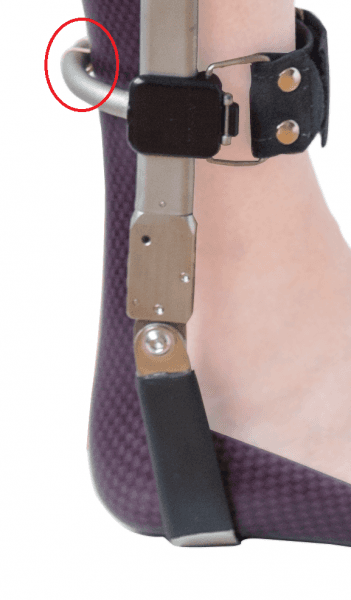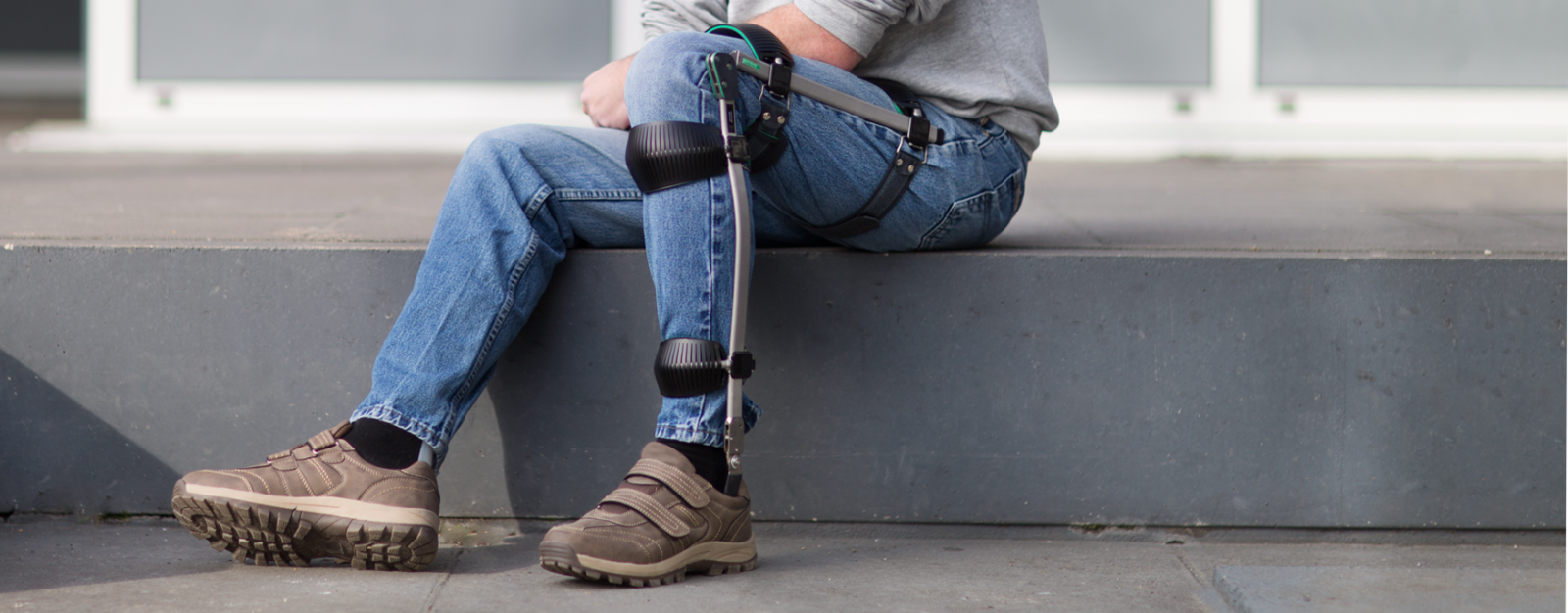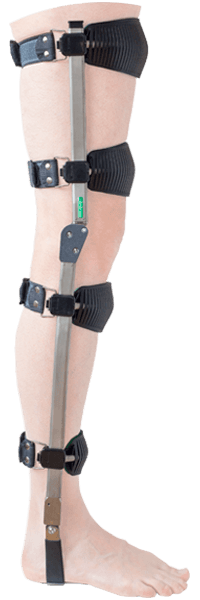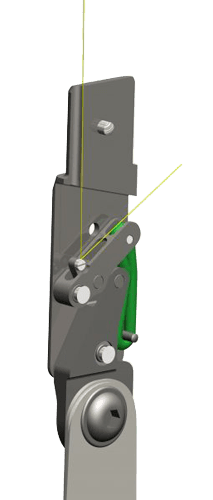How does the UTX SWING work?
At the UTX SWING, the knee joint is locked by a simple pal. If this pal falls into its lock position, the hinge locks. There is no flexion (bend) of the knee joint possible. The pal is pushed in that position by a spring.
Dorsal flexion leads to unlocking

The PUR ophanging of the AFO allows just enough movement in the forward tilt of the leg to unlock the ankle hinge.
There is a cable that runs through the UTX tube all the way to the ankle hinge. During the stand phase the standing leg rotates over the ankle and and foot further forward. This movement is called dorsal flexion. With sufficient dorsal flexion (if the standing leg is tilted sufficiently far forward), at one point, the ankle joint pulls sufficiently firmly on the cable to pull the paw of the knee joint out of the lock. The knee is now free to bend, so that a natural knee flexion can be made during the swing phase and an energetically efficient walking pattern develops.
But only if it is allowed
Dorsal flexion thus leads through a joint between ankle- and knee hinge to unlatch of the knee joint. But what if you accidentally stand on a pebble-stone? Then you may have dorsal reflexes far too early in the phase. Then the knee joint is not allowed to unlock. Therefore, there is added security in the UTX SWING. Dorsal flexion only leads to unlocking if it’s allowed.
The only situation in which it is absolutely safe to unlock the knee joint is to extend the knee (the hinge) when it wants to stretch (make extension). In that situation there is no danger of bending unexpectedly. The knee wants to stretch. Ambroise’s designers have introduced this security through an ingenious system in UTX. The UTX can only be unlocked if there is enough dorsal flexion and at the same time knee extension.
Natural way of walking
Knee extension is a natural part of the knee movement in the late stand phase (before the knee begins to bend). At Ambroise we have made a safe system that can unlocked at the end of the stand phase and only when it is safe, but in line is with a natural way of walking.


























